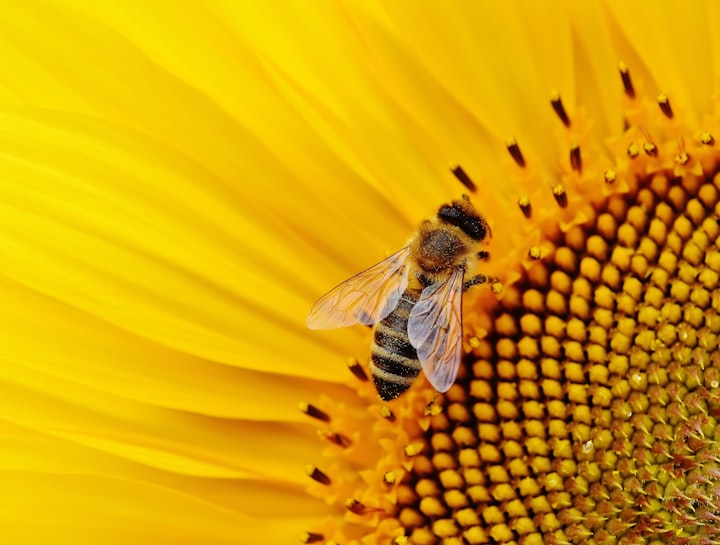Tips on Preserving Honey Bee Populations
Honey Bees could use the support

If you love honey bees, but are concerned about their declining numbers, there are a few tips you can follow to help preserve their population. These include planting flowers and avoiding pesticides.
Planting flowers
Planting flowers can be an effective way to preserve honey bee populations. Many species of wild bees depend on flowers for pollen and nectar. Adding a mix of flower species to your garden or farmland will help preserve honey bee populations and also support beekeeping activities.
Many suburban gardeners and city municipalities are implementing plantings that benefit pollinators. This helps control run-off water and adds beauty to a community. For example, if you live in an urban area, you can plant a flower garden on your roof to attract bees. State highway departments also have programs where they plant flower strips to attract pollinators.
Some common flowering plants are the red maple and the species of the willow family. Both of these flowers flower early in the season, which is ideal for honey bees. Other flowering plants that produce substantial amounts of nectar include ornamental onions and butterfly weed. If you want to plant flowers just for the bees, choose native species.
Native flowers are also important for pollinators because they are low-maintenance and native to the area. This is an advantage over cultivated species plants. The latter, called "nativars," are cultivated versions of native plants, but don't attract bees as much as the original species.
Planting flowers will increase the number of honey bees in your garden. Bees need a constant supply of flowers throughout the year. Planting native flowers will help them get the nectar they need. Honey bees can fly up to 1.5 miles to find food, so planting flowers will provide them with a continuous supply of nutrients.
Avoiding pesticides
If you're interested in preserving the honeybee population, you should avoid the use of pesticides, especially agrochemicals. Although their use in agriculture is essential to minimizing crop loss, many of these substances cause harmful effects to other organisms. Honey bees, in particular, are constantly exposed to various chemical substances as they forage in different fields.
Fortunately, some pesticides are less harmful to honey bees than others. If you're not sure whether a particular pesticide is harmful to honey bees, consult the label to find out. The EPA's Pollinator Protection Web page has information about the hazards of various pesticides to pollinators.
In particular, neonicotinoids and other pesticides have been said to be linked to honeybee depletion and colonies dwindling. These pesticides also reduce honeybee foraging activity, brood production, orientation, and dance communication, and reduce their disease resistance.
Pesticides used in agriculture are the main culprit behind colony collapse disorder. These chemicals are not only harmful to bees, but they can also weaken their immune systems and encourage destructive pests to infest the hives. Bee colonies can collapse in two to three years if they are exposed to a lot of the pesticides.
There is also a risk of exposure to pesticides by foraging workers.
These bees take nectar and pollen from contaminated plants and bring these chemicals back to the colony. The poisoning may be subtle, and the symptoms are often mistaken for other factors. In addition, stored pollen and wax comb contaminated with pesticides could endanger the bees' survival in winter.
In addition to bee-friendly plants, there are other measures you can take to ensure that the hives remain intact. For example, avoid using pesticides in your yard if you plan to grow fruit trees or other plants. Besides reducing pesticide use, you can help preserve honey bees by increasing the biodiversity in your region.
Educating yourself and your siblings
In order to help honey bees survive, we must educate ourselves and our siblings about the importance of preserving honey bee populations. This can be done in many ways. First, we should advocate for honey bees in our communities. One way to do this by sharing our knowledge with others through message boards and forums.
We can also sponsor a hive, which is a great way to get involved.
Secondly, we can educate ourselves and siblings about the dangers of destroying bees. We should teach them that bees only sting when they're defending their hive or themselves. Bees are naturally curious creatures, and they may bump into humans as they investigate a new situation. This way, we can avoid harming these fascinating creatures.
Lastly, we can promote organic food, which is better for the environment and bees. Purchasing organically-produced honey helps preserve bee populations in managed hives. Unfortunately, with increased urbanization, there is not much space for beekeeping. While we don't have the time to tend to a hive, we should support local farmers and organic farmers, and we should avoid using (or at-least reduce) herbicides and insecticides on our lawns.
It's also important to educate ourselves about the dangers of pesticides and their effects.
Finally, we should encourage the next generation to learn about bees, since they are very important pollinators. By teaching them about the importance of bees and preserving them, they'll be more likely to care about their future. Honey bees are important to a wide range of crops, so it's important to protect them. There are many ways to do this.

Investing in managed pollinator colonies
As a pollinator, honey bees have an important role in ensuring the growth of crops. The insects' presence in an area increases the yield and size of fruit. Fortunately, honey bees can be easily managed and moved to new crop sites. Because of this, many beekeepers earn additional income by renting out their colonies to farmers for pollination purposes. In Georgia, for example, beekeepers apparently rent out their beehives to pollinate blueberries, apples, cucumbers, and watermelons.
Since pollination is so important, the health of honey bee colonies is crucial to food production.
One way to manage the hive population is to use various cultural management techniques. One technique involves replacing weak queens with stronger queens. Another method involves supplemental feeding. These techniques help reduce pest resistance. While these measures are not perfect, they can help keep bee populations healthy and abundant. By using these methods, beekeepers can effectively protect honey bee populations while simultaneously generating income.
Pollinators are increasingly rare and decreasing in many parts of the world.
This decrease is partly due to intensive could be due to farming practices, excessive use of agricultural chemicals, and potential ongoing climate issues. These practices are also affecting crop yields and nutritional value. As a result, we must become more pollinator-friendly.
Beekeepers should provide their colonies with food and pollen, as well as a suitable place to house the bees. Ideally, the bees should be kept in a partially shaded, sheltered area. Adding honey supers to the hive body will help accommodate the incoming nectar and limit late-season swarming. Bees store nectar in their cells and evaporate it to eighteen percent water content. The honey is considered ripe when the bees cap it.
In addition, some beekeepers use bee repellents to keep bees out of the supers.
Humans have been studying and breeding honey bees for several generations. The earliest hives were essentially replicas of their natural habitat, and were built with hollow logs, bark, and coiled rope. As a result, they are able to recognize diseased and infected brood, and are more likely to remove it. However, this trait is a recessive gene, and must be passed on from the parents.
Cleaning apiary equipment
Whether you're a beginning beekeeper or a veteran, cleaning apiary equipment is a must for the health of your hive and bee population. The key is to clean and disinfect the equipment to prevent the spread of desease. Ideally, you should disinfect new hives and equipment at least six months before using them. Sterilize any second-hand apiary equipment. Wash and dry all hive tools, including smokers and extractors, before using them. In addition, you should also clean and dry any containers you use to store honey.
Always dispose of any excess honey, especially if it spills out.
Beekeepers typically re-use beehives to save money, but they must clean them first to avoid transferring the disease to other colonies. If the beehive has fallen prey to a disease, beekeepers should char the frames to perish any spores or eggs that could harm the bees. Bee diseases can destroy the honeybee population, and cleaning the beehives before reusing them is an essential step for the health of the entire apiary.
Beekeepers should also be aware of the dangers of pesticides, herbicides, and other chemicals that can harm bees. Honeybees can be sensitive to them and can be depleted by a small amount of contact. Even herbicides that are used in agriculture can affect the entire beehive, and beekeepers should never use them on their hives.
Among the most common pests that affect beekeeping equipment are wax moths. The larvae of these insects burrow through the wax combs, destroying them. The larvae also plaster their feces and webbing onto the beeswax combs. Most of the time, honey bees are good at protecting their colonies from moths, but in some cases they're not.
Often, moth damage occurs when the bees' queen perishes.
Thanks for reading and for more content like this visit aw-daily.com
About the Creator
antoniowestley
Writer / Illustrator / Creator for more info look me up on twitter!






Comments
There are no comments for this story
Be the first to respond and start the conversation.